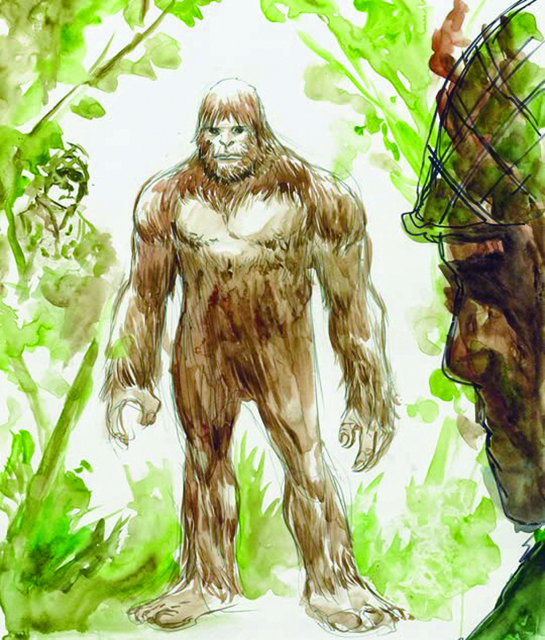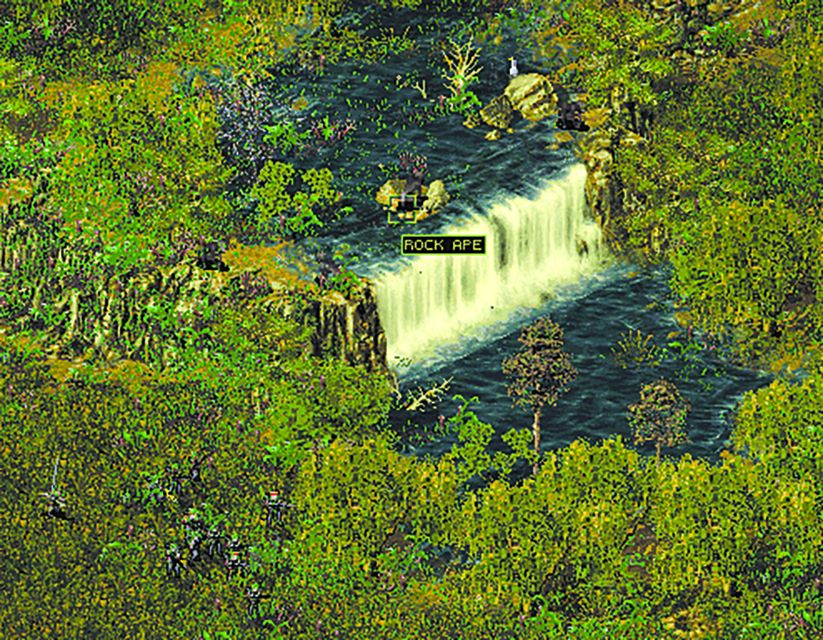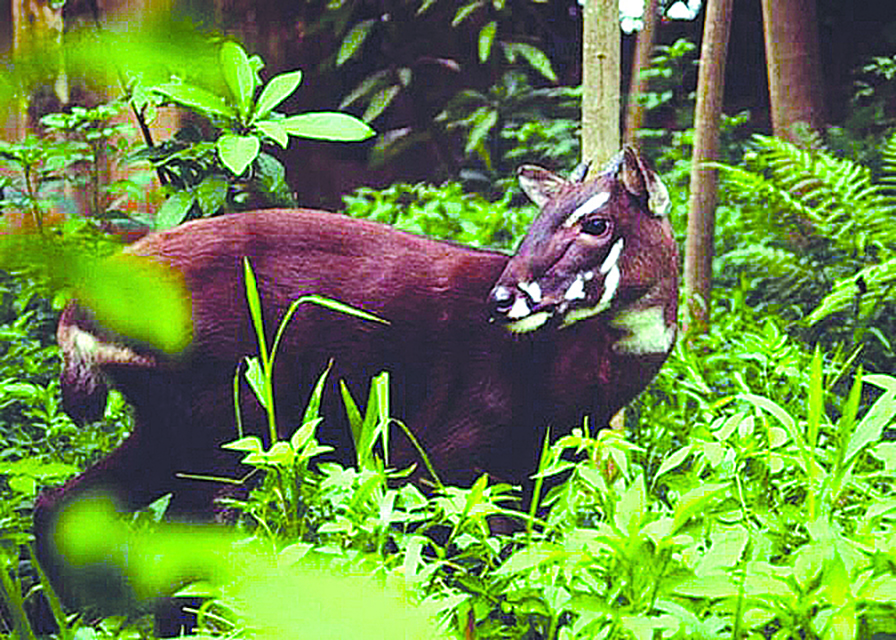
This month, The Wild Side brings to light another cryptid, a creature yet to be discovered by science. We investigate the dense forests of Vietnam to look into what American soldiers nicknamed Rock Apes and what the Vietnamese call Nguoi Rung or people of the forest – essentially a Vietnamese version of Bigfoot.
Described by eyewitnesses as being five to six feet tall, Rock Apes are bipedal – walking on two legs – and are coated in brown or reddish fur. They are strongly built, with long limbs and protruding stomachs. Some describe them as looking like ground-dwelling orangutans, all known species of which are currently arboreal or tree-dwelling and haven’t inhabited Vietnam for thousands of years. The Rock Apes’ moniker originated from their supposed habit of throwing rocks at both people and buildings.
Said to have humanlike mannerisms, the animals are thought to live quietly in groups deep in the jungles of Vietnam, once quiet and unexplored places which were heavily scarred by war.

WAR-TORN LANDSCAPE
Vietnam is a war-torn place, which I can attest to during numerous visits. Three ‘Vietnam Wars’ were fought after the Second World War – the first was against the French (1946 to 1954) and ended in the establishment of two countries: North and South Vietnam. The second and most famous was waged against the Americans and South Vietnamese (1965 to 1975) and ended with the final unification of Vietnam. The third (1975 to 1991) toppled the nightmarish regime of Pol Pot in neighboring Cambodia while repelling a full-scale Chinese invasion. Vietnam won all of these wars, but both its people and land suffered greatly.
As Vietnam’s original French (they controlled Vietnam, Laos and Cambodia from 1884 to 1954) and Japanese (they took control of Vietnam from the French briefly from 1940 to 1945) colonizers largely avoided the deepest parts of the jungle, most reports of Rock Ape encounters were during the second Vietnam War, which spanned from 1965 to 1975.
The Americans were the first group to enter and stay in Vietnam’s Central Highlands in force, by having their famous Green Berets befriend and recruit the fierce Montagnard hill tribes (some similar in dress and culture as the Philippines’ very own Igorot and Ibaloi tribes). The Americans finally opened up the Central Highlands by building large camps and fire bases within supporting range of each other, disturbing and heavily bombing what was previously virgin landscape.
Rock Ape encounters were also logged around the Demilitarized Zone or DMZ, a scantly-populated region northeast of the highlands.

TWO SIDES OF THE STORY
Both American and Vietnamese soldiers reported ape encounters, both from a distance and up close. In 1968, USMC Lance Corporal Alfonso Villarreal recalled how one night, his squad saw what looked like a large medicine ball moving towards them through a ravine. When it was nearly upon them, they realized it was a baby ape, which soon panicked into the brush.
Soon, something started rolling down rocks down the steep sides of the ravine. The boulders were being pushed down by what Villarreal was sure were adult rock apes. “They were just like gorillas,” he recalled.
USMC Sergeant Thomas Hodge described the animals in an official interview for the Library of Congress:
“There’s only one animal that I used to get a kick out of. It’s what they call a Rock Ape. You see them up in the mountains: little, short, probably about four feet high, something like that, you know, and if we – it wasn’t a matter of us shooting them, so we

tried to throw stones at them or, you know, to get them out of our area, and they would pick them up and throw them back at you, you know, so those were the apes.”
In 1969, a patrol from the US Army’s 101st Airborne Division encountered eight Rock Apes walking along a trail on Nui Mo Tau Ridge. Mistaking them for Vietcong, the soldiers opened
fire, which failed to bring down any of the apes. Eyewitnesses claimed that a male charged the soldiers while the younger apes retreated, which is a common behavior exhibited by African gorillas.
US Army Sergeant Kregg Jorgenson even wrote a book with an eyewitness account of one of the creatures in Strange but True Stories of the Vietnam War.

“It was a hot day. The six men from the 101st Airborne Division were taking a break in the middle of a mountainous jungle when the event took place. They had been carrying 100 pounds equipment under the unforgiving sun in a mosquito infested environment, full of unfamiliar sounds and views that were nothing like the American soldiers were used to in their native land. Despite the momentary resting time, they kept their five senses on, for they were aware that the Vietcong could have very well tracked them, something the natives were exceedingly good at. Suddenly, according to the men, a few small trees located fifteen yards uphill began clearly shaking. The soldiers had trained for this, and as they got ready for combat to fight the expected VC soldiers jumping out the bushes, they never imagined what they saw next.
“A long, cucumber-shaped head showed up. The face, the soldiers said, was covered in red hair with a pair of dark eyes and a huge mouth. The creature then stepped out of the vegetation into a clearing, allowing the group to observe the rest of its muscular body, which was also featured by the same type of red hair. It wasn’t taller than five feet and walked upright. It stopped, looked at them as though scrutinizing each of the soldiers.”
“What the hell is that?” one of the soldiers recalls muttering.
“It’s an orangutan, isn’t it?” asked another.
“Well if it is, then he’s lost, because there ain’t no orangutans in Vietnam.”

MONKEY MOUNTAIN
One particular hill in Vietnam was the site of so many Rock Ape sightings that it became known as Monkey Mountain. The US Marines stationed there said the apes threw stones into the base compound which injured some troops.
Toward the end of the war, Vietcong and North Vietnamese troops reported so many sightings of Rock Apes that the North Vietnamese Communist Party Secretariat ordered an official scientific investigation.
Dr. Vo Quy, a respected ornithologist and environmental researcher, was dispatched from Hanoi and eventually found Rock Ape footprints, which he soon made casts of. Wider than a human foot, the prints were too large for a typical ape.
Another Vietnamese scientist followed suit after the war. In 1982, Tran Hong Viet from the Pedagogic University of Hanoi discovered further Rock Ape footprints.
While no photographs or bodies of these strange Yeti-like cryptids were ever recovered, the fact that so many soldiers from both sides attest to their existence should make us think twice before dismissing all stories.
It’s definitely possible for American GIs and Vietnamese troops to have misidentified Vietnam’s other monkey species for Rock Apes. Vietnam after all has a fair share of macaques, langurs, doucs and gibbons – but none of them grow taller than three feet, compared to the human-sized Rock Apes.
It’s also possible that encounters, especially at night, were hallucinations of men pushed by war and weariness (soldiers in war are almost always tired beyond belief) past normal limits. That many troops on both sides sometimes (almost regularly by 1972, towards the end of the war) used drugs like Marijuana adds weight to this argument.
But what if there’s really something big waiting to be discovered in the jungles of Vietnam?

KEEPING AN OPEN MIND
In 1992, a previously unknown species of cattle was found in the Vu Quang Nature Reserve in the Annamite Range of Vietnam. Hailed as the Asian Unicorn, the Saola (Pseudoryx nghetinhensis) is considered critically endangered and one of the rarest of animals, with as few as 70 individuals left on Earth.
Not surprisingly, sightings of Rock Apes have also been reported within the Vu Quang Nature Reserve. In an age where everyone has a camera-equipped cellphone, perhaps it’s only a matter of time before the existence of Rock Apes becomes rock-solid.
So what’s our verdict at the Wild Side? As always, we can’t decide until we get science-based evidence – bones, GPS-corroborated videos or even a live animal. Until that day though, we’d like to keep an open mind.






